The Ekmans, creators of The Atlas of Emotions, on what it takes to make a scientific, secular map for His Holiness
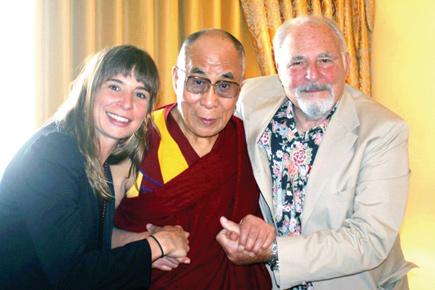
 When the Dalai Lama asks for a map, and one for our emotions no less, it has got to be impressive. But, it’s also got to be engaging, much in the manner of the loud chuckles that the Buddhist spiritual leader is known for.
When the Dalai Lama asks for a map, and one for our emotions no less, it has got to be impressive. But, it’s also got to be engaging, much in the manner of the loud chuckles that the Buddhist spiritual leader is known for.
Two weeks ago, psychologist
Dr Paul Ekman, professor emeritus at the University of California, San Francisco (UCSF), announced the launch of The Atlas of Emotions, granting the Dalai Lama’s wish. Several years ago, the Dalai Lama had said to Ekman, “When we wanted to get to the New World, we needed a map. So, make a map of emotions, so we can get to a calm state.”
ADVERTISEMENT
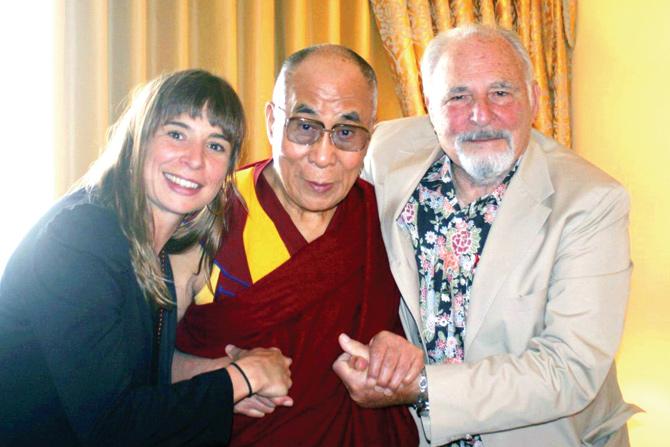
Dr Paul Ekman (right) is more than just map-maker to the Dalai Lama. The two first met in 2000 at Dharamshala, after Dr Eve Ekman (left) had befriended Tibetan refugees. Since 2000, the Dalai Lama and Dr Paul Ekman have spent nearly 60 hours of conversation-time, discussing the atlas, among other things
The Atlas of Emotions has a nice ring to it. It sounds promising, even alluring, a Sindbadian voyage through the mind’s emotional shipwrecks in the hopeful search for placid waters.
This new-age atlas is an interactive website. When we check it out, we are greeted by five bobbing orbs, vaguely reminiscent of Olympic rings. Each of them is an emotional continent, rubbing against and drifting away from each other, much in the way that our emotions work. Their names: Anger, Disgust, Enjoyment, Fear and Sadness.
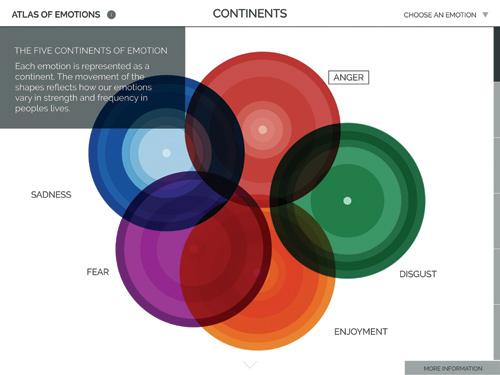
The five continents of The Atlas of Emotions: Blue for Sadness, red for Anger, green for Disgust, orange for Enjoyment and purple for Fear.
Each continent is divided into states. Thus, anger breaks up into a graph that shows annoyance, bitterness and fury, among other categories. Enjoyment, too, has emotional states like compassion, ecstasy, and, borrowing from other languages, naches (Yiddish for pride in an offspring’s accomplishment) and fiero (Italian for achieving a particularly difficult challenge). From here on, the map offers more, such as triggers for these emotional states.
Scientific and secular
This is not the first time that Ekman, who has pioneered the study of emotions and their relation to facial expressions, has been sought in this regard. Hollywood, perhaps an antithesis to the Dalai Lama, has been a regular seeker. Ekman has advised the creators of Inside Out, Pixar’s animation film, in which five personified emotions come to the aid of little Riley. Coincidentally, these are the five universal emotions that find place in the atlas too.
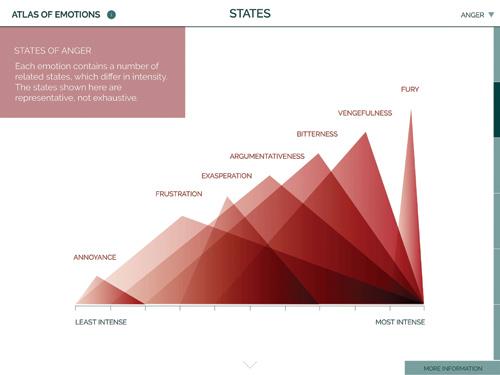
Anger opens up into spikes, representative of emotional states
The orbs may be sprightly, but their names are hardly whimsical. These ‘universal’ emotions are the result of a survey that Ekman carried out with 248 scientists in 2015 and arrived at a consensus. “The Dalai Lama wanted the atlas to be based on scientific knowledge,” says Ekman, over a call from San Francisco. Last year, the Dalai Lama had said that his focus was on “seven billion human beings alive today… We are trying to adopt a secular approach that can reach all human beings.”
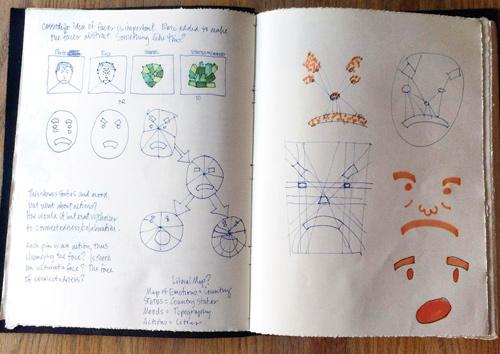
Data visualisation firm Stamen designed the atlas and has a leather notebook full of drawings based on discussions with the Ekmans about how emotions work. PIC/STamen
“A universal emotion is easily recognisable on the face. A grimace is easily distinguishable across cultures, but that’s not the case with shame. How shame is expressed in Greece is different from how it’s shown in Singapore,” says Dr Eve Ekman, Ekman’s daughter, a post-doctoral fellow at UCSF Osher Center for Integrative Medicine, who assisted him on the atlas.
Ekman chips in saying that this is just the first version of the map. Come back in 20 years, he says, and shame could be the sixth orb.
What about love? The atlas has already registered 3,00,000 views from across the world. Surely, there must be those searching the depths of love?
“Love is a problematic word. You love your children, your spouse, your work — you add a term to it. But love is full of other emotions. I feel sad, for instance, if Eve doesn’t call or am excited when something great happens to her,” says Ekman, with Eve’s cajoling remarks as a rejoinder. Bottomline: If you want love on the atlas, you will have to wait for future versions. For now, it’s in the annexe section.
Finding your way
For manifesting the map, the Ekmans went to Stamen, a San Francisco-based data visualisation firm known to make geographical maps and charts. But, a map for emotions was a first for Stamen too. “Making the atlas was a lot of fun, but it was different from Inside Out. Emotions are not pictures,” says Ekman. Look closely, and you will find the quirks. The fear states are shaped like purple fangs, disgust should remind you of cartoony poop piles and sadness wells up like teardrops. It’s science packaged with pop culture.
The Dalai Lama described the atlas as “wonderful and apt”, allowing us to understand “how harmful destructive emotions can be.” In Buddhist psychology, the definitions of emotions are not specified; emotions are just enemies to mental clarity. The atlas’ idea that emotions, like anger or sadness even, can be your friends, is new to Buddhist psychology.
But, the atlas is not prescriptive. “Its purpose is to help us recognise ‘the spark before the flame’, to be aware of an impulse before action. Awareness is a way to manage difficult emotional experiences through understanding,” she says.
If it looks simple, and untangles our emotions (usually comparable to a cat with a ball of yarn) into a few keywords, then that is what the atlas sets out to do.
However, if you think that as you scroll down the atlas, you will eventually reach a state of calm, then you are mistaken. Having a map is one thing, understanding how to use it is another, as Tintin and Indiana Jones will have you know.
 Subscribe today by clicking the link and stay updated with the latest news!" Click here!
Subscribe today by clicking the link and stay updated with the latest news!" Click here!







